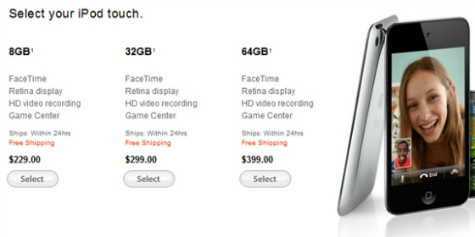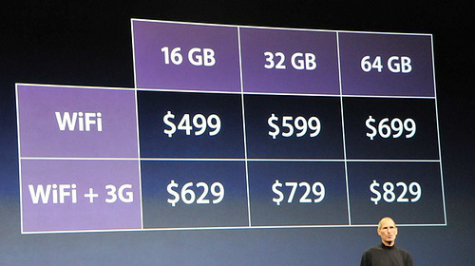Shopping can be a demanding thing, even if we don’t want or plan it to be. Deals go on and off every day, with a frequency so high that sometimes you wonder if what you got was really the ‘deal’ it claimed to be.
Businesses and brands are far from dumb; most of them know what they’re doing most of the time. And this includes pricing tactics. Today we’re presenting 5 useful tips for all kind of shopping: from groceries to technology and gadgets. It’s time to start making smarter decisions!
1. The Decoy Offer. This type of offers activate a weird psychological feature in our brains. It’s a tactic that works well with a customer base that has limited
information. My 85-year old grandmother attempting to buy the right iPod would be a good example of this.

The catch of this tactic lies on relative advantage. In the example above, the decoy is the higher-priced iPod. Customers would probably go for the 32GB and 8GB options right away – and in many cases they’d do it before evaluating other alternatives that don’t even figure in this price bundle. Conclusion: first identify what you needand then make a price-based decision.
2. The Curious Case of Number 9. This one’s quiet old, but still staggeringly effective. Prices that end in 9 will sell better than those who don’t. The explanation lies on a little perceptive distortion: we’ll always see the number 29.99 as much lower than the number 30 – though the difference is unimportant. Again, just breathe and evaluate what you need before picking an option based solely on price.
3. Anchors released, ready to sell! In pricing strategy, an anchor is a product that makes another product look good by contrast – therefore, boosting the sales of that suddenly good-looking product. Don’t worry, it’s just a little mind trick. Let’s see it with an example: you walk into a restaurant and there’s two burgers on sale. One costs $7.99 and the other one $18.99, the difference being almost non-existent (more lettuce or extra cheese, whatever works). The restaurant just wants to sell the $7.99 burger, and the contrast with a pricey-yet similar burger boosts the sale. How? Easy. Anchoring.

Apple performing some anchoring
4. Three options for a safe sale. This one’s a bit tricky, because it’s not always easy to detect. Whenever you encounter 3 similar prices, beware of the middle one. For example: you are at the restaurant and they have 3 types of wine. The first one costs $5, the second $7 and the third one $9. Most people would go for the middle option – a decision that feels safe (not to pricey neither too bad). There’s where a catch may lie: for a number of reasons, the restaurant had to sell that wine. How? Make it a middle option!
5. Perception, you’re doing it wrong. Just picture if Netflix, instead of offering $7.99 monthly subscriptions, offered $95.88 annual ones. They’d be selling much less! That’s how perception works. $95.88 is what 12 months of Netflix cost at a monthly rate of $7.99. However, the big number is intimidating when compared to the small number. Yet, they’re mean exactly the same. That would be all for now. We hope you find this tips helpful the next time you go
shopping!
6. Make middle option the most profitable: This is an enhancement of tactic #4 – used by the masters of psychology who truly understand consumer behavior during social interaction. Most consumers don’t like to walk into a restaurant, open up the menu and order the cheapest item on the menu to the waiter or waitress. As such, the second highest priced item is the one which most customers are going to order, especially in a restaurant.
To maximise the profit, many restaurants are pricing the second option a lot higher than the cheapest item on the menu. For example, 3 types of wine. The first one costs $5, the second $9 and the third one $10. When the cashier rings, it is more than often that extra $2 has been deposited as compared to tactic #3.





__large.jpg)









__small.png)










